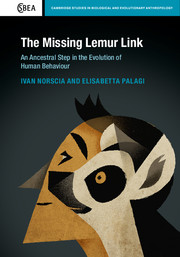Book contents
- Frontmatter
- Dedication
- Contents
- List of contributors
- A message from Jane Goodall
- Foreword
- Preface by the authors
- Acknowledgements
- Part I Communication: from sociality to society
- Part II How conflicts shape societies
- 4 Bossing around the forest: power asymmetry and hierarchy
- 5 Something to make peace for: conflict management and resolution
- 6 Anxiety…from scratch: emotional response to tense situations
- Part III Why lemurs keep in touch
- Part IV Closing remarks
- Looking back to the future – Michael Huffman
- Index
- References
4 - Bossing around the forest: power asymmetry and hierarchy
from Part II - How conflicts shape societies
Published online by Cambridge University Press: 05 May 2016
- Frontmatter
- Dedication
- Contents
- List of contributors
- A message from Jane Goodall
- Foreword
- Preface by the authors
- Acknowledgements
- Part I Communication: from sociality to society
- Part II How conflicts shape societies
- 4 Bossing around the forest: power asymmetry and hierarchy
- 5 Something to make peace for: conflict management and resolution
- 6 Anxiety…from scratch: emotional response to tense situations
- Part III Why lemurs keep in touch
- Part IV Closing remarks
- Looking back to the future – Michael Huffman
- Index
- References
Summary
Power must be understood in the first instance as the multiplicity of force relations immanent in the sphere in which they operate and which constitute their own organization: as the process which, through ceaseless struggle and confrontations, transforms, strengthens, or even reverses them; as the support which these force relations find in one another, thus forming a chain or a system, or on the contrary, the disjunctions and contradictions which isolate them from one another; and lastly, as the strategies in which they take effect…Power…is the name that one attributes to a complex strategic situation in a particular society.
Michel Foucault, History of Sexuality, 1976I've got the power!
A society is not the simple sum of single individuals but an emergent property of their multiple and intertwined relationships, which are able to generate complex relational networks. Dominance relationships within social groups can be based upon the ability of using force, individually or by forming coalitions (intrinsic and derived dominance, respectively; Hand, 1986) or upon leverage (when involving inalienable resources that cannot be taken by force; Lewis, 2002), as extensively explained in Chapter 8.
Over the centuries, power has been one of the main subjects of discussion for philosophers from Niccolò Machiavelli in the sixteenth century (e.g., The Prince) to Michel Foucault in the twentieth century (e.g., History of Sexuality and The Subject and Power), men of letters such as Vittorio Alfieri (e.g., Della Tirannide, nineteenth century), contemporary linguists such as Noam Chomsky (e.g., Understanding Power: The Indispensable, 2002) and scientists such as Frans de Waal (e.g., Chimpanzee Politics: Power and Sex Among Apes, 1982), to cite a few by heart. Social hierarchies, deriving from the different distribution of power among individuals, drive the behaviour in many species, including humans. History is full of examples of the impact that extreme power imbalance can have on societies. The holocaust, the abduction of Sabine women, and the ancient Egyptian pyramidal hierarchy – from farmers and labourers to the pharaoh – are just some of them. In today's society, a corporation is structured as an organisational chart with the Chief Executive Officer (CEO) at the root of the hierarchy.
In humans, social position can affect parental investment, and mental and physical health, for example contributing to hypertension, depression and the increase of stress levels (Adler et al., 2000, 2008).
- Type
- Chapter
- Information
- The Missing Lemur LinkAn Ancestral Step in the Evolution of Human Behaviour, pp. 77 - 111Publisher: Cambridge University PressPrint publication year: 2016

